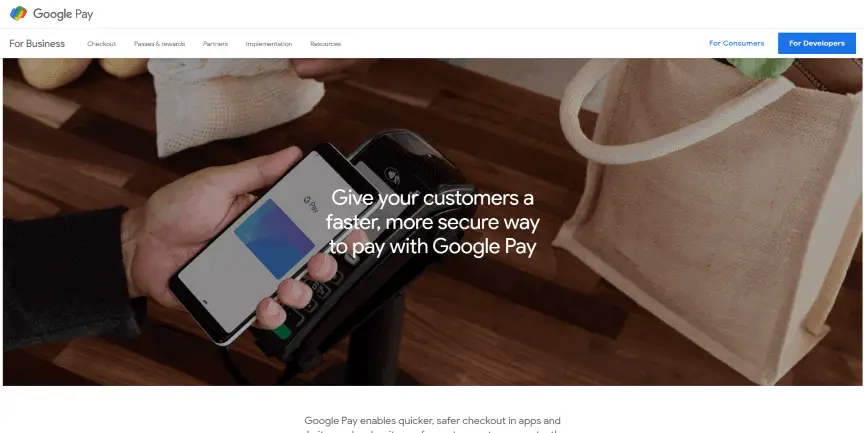What Is an E-Commerce Website
An E-Commerce or Electronic Commerce website is a business concept in which sales transactions are conducted through the internet. This format is followed by almost every online shopping website, big or little. An E-Commerce website allows you to buy and sell products over the Internet.
They aren’t quite old enough to be called grandfathers, but the title implies a greater degree of respect; eBay and Amazon, the biggest E-Commerce websites, set the path for a new and more convenient manner of shopping. Of course, Internet buying and selling existed before these organizations. Still, due to their efforts, E-Commerce websites have become a more convenient and preferable platform for many consumers.

Moreover, consumers today have a variety of Internet buying possibilities. You must offer an outstanding user experience and encourage visitors that your products and website are worthy of their business to obtain sales through your E-Commerce website. When compared to working on other types of websites, designing for E-Commerce websites poses some unique problems.
The characteristics of well-designed e-commerce websites are pivotal in helping you boost sales on your e-commerce website. Elements such as user-friendly navigation, compelling product displays, and secure checkout processes play a crucial role in creating a seamless and trust-inspiring online shopping experience for customers, ultimately driving higher conversion rates.
This article will talk about the most significant and essential characteristics an E-Commerce website has to attract consumers. So, if you are looking to start an E-Commerce website on your own, you are in the right place.
1. Simplicity
The items that are for sale should be the center of attention on an E-Commerce site. It will bring attention to the site’s design rather than the products. Expensive design that isn’t justified will likely cause more harm than good. When you look through our collection of attractive E-Commerce websites, you’ll note that many of them have an effortless design and layout.
Such design is ideal for E-Commerce because it focuses on the products rather than the design. Keeping the design and layout simple might also improve the user experience. Simple websites are easily accessible, and customers can get what they’re looking for with little difficulty.
One of the best examples of the simplicity we are talking about is hebeboutique.com. Hebe’s webpage is stunning. Photography is what stands out the most. Thus, when running an online E-Commerce business, especially a clothing website, high-quality photos are essential.

Furthermore, Hebe Boutique’s typography is fantastic. The font is slightly thicker than what you’d find on the internet, and it highlights the website’s design even more.
2. Branding
The brand has an impact on many shoppers’ shopping decisions. Both online and offline selling requires the development of a strong brand. The website is merely one aspect of an entire branding plan for shops that sell online and in physical places. So, the website should complement the company’s other branding initiatives so that customers feel at ease when browsing.
Moreover, a startup’s long-term objective should be branding. You won’t have the benefit of a long track record or established customer trust. Create a strong brand image that is consistent across your website, social media profiles, and other marketing materials to begin.
For example, everybody knows what Adidas is and what they sell. Upon visiting the site, you will see their logo in the upper left corner and, also on the top, their sections and a search bar. You will see their “Popular right now” section with subsections of shoes, clothing, best-sellers, etc.

3. Fast Loading Time
Akamai, a global content delivery network, did a study on this subject. According to their research, if a web page takes longer than 3 seconds to load, 40% of visitors will leave it. Furthermore, if page loads are delayed, 14% will switch to a different site, and 23% will stop purchasing or walk away from their computer.
Therefore, plugins and redirects should be used as little as possible. You can do several things to maintain your page speed fast, like sticking to a simple design, employing Gzip compression to reduce file size, and enabling browser caching. You can also reduce redirects, use a content distribution network, optimize your images, and there are plenty of additional options available to you.
4. Shipping Estimates That Seem to Be Accurate

Based on their growing experience buying at other online retailers, today’s buyers are savvy when estimating how much something should cost to ship. If you charge too little, you will lose money because your consumers will think it is sketchy. However, if you charge too much, you will drive customers away and buy somewhere else.
In terms of timing, your shipment predictions should also be correct. Your customer reviews will soar if you can get those shipments out on time or perhaps ahead of schedule. There are numerous obstacles to determining the actual cost of a load. Calculating shipping costs is simple if you offer uniform objects and don’t have a wide variety of product types (for example, if you own t-shirt business and only sell one type of goods).
Let’s imagine that you sell various items ranging from collectible coins and scarves to washing machines and trampolines. What happens if you order an Indian Head penny and a Maytag front-load washing machine simultaneously? Do they all ship from the exact location?
Do you stuff the penny inside the washer and send them both? Is it possible to mail them separately? Are you able to ship the washer through next-day air since your customer insists on a fast shipment because they’ve had it with back-breaking trips to the laundry, but the coin via ground because it’s cheaper that way?
Whatever you sell, you must spend time identifying all possible situations for shipping and handling charges. This phase will need to be revisited regularly, especially if you add new products to your store regularly.
5. You Need a Secure Payment Network
To safeguard you and ensure that no data passes in the clear over the Internet, your consumer’s credit card number, expiration date, and cryptogram are encrypted in the transmission as part of secure payment. The three best online payment systems are Authorize.net, PayPal, and Google Pay.
Authorize.net is one of the most extensively used payment gateways on the Internet, with over 430,000 businesses. Visa’s payment solution has been operational since 1996 and now processes over a billion transactions annually. Also, Authorize.net is easily integrated with several popular e-commerce platforms, including Magento, Volusion, and X-Cart.

PayPal is the most frequently used payment processor globally, with approximately $936 billion in payments processed in 2020. It is used by about 28 million merchants and 325 million active account holders. Payments can be made with a credit card or a user’s existing account. Money can be sent to an email address directly, requiring customers to create a new PayPal account. In addition, PayPal users can send money using the service and receive payments, which is a function that only a few payment providers offer.

Google Pay is the company’s response to PayPal. Users can use Google Pay to pay for goods and services using an account linked to their Google profile. Because millions of Internet users utilize Google for other services, purchasing through Google Pay, a more straightforward process has a significant advantage over the competition.

6. Functional Shopping Cart
The use of an e-shopping cart increases efficiency. Purchases can be tallied and paid for in a single transaction by allowing customers to store and manage multiple goods. Customers can be misdirected towards cart abandonment if the site is poorly designed and the sale is lost.
However, customers being required to register their personal information before completion is a common reason for desertion. To avoid desertion, these websites allow users to do a “guest checkout” or explicitly laying out the processes so they know where they are in the process.
7. High-Quality Images and Accurate Product Descriptions
Online customers must rely on images and written descriptions in the absence of seeing and experiencing physical goods. These two factors’ significance cannot be overstated. Finally, if a customer can’t obtain a good idea of what a product is like, they’re unlikely to purchase it.
Clean, professional photography with many shots for a single product to allow for varied views is used by sites that get it right. In terms of copy, they keep it scannable, benefit-focused, and reader-specific.
8. Completely Functional Customer Support System

Providing outstanding service in a timely and professional manner is essential to your company’s success. Nothing is aggravating than a website that lacks clear contact information and instead directs you to lengthy FAQ sections.
The key to getting it right is to give clients a variety of ways to contact you. A live chat function, in addition to a phone number and an email address, is one of the most effective methods. According to eMarketer, 63 percent of customers are more inclined to return to a website that offers this option, according to a Bold Software survey.
9. Deals and Discounts
Consumers love to get a good deal — look at how crazy people become on Black Friday. You’re missing out if you don’t provide deals and discounts on your E-Commerce site, from percentage-based discounts to coupon codes, free delivery, and freebies.
Therefore, you should operate a discount engine on your site to help with this. Many E-Commerce platforms include one by default, which allows you to quickly and easily set up and manage a wide range of promotions on your e-store.

